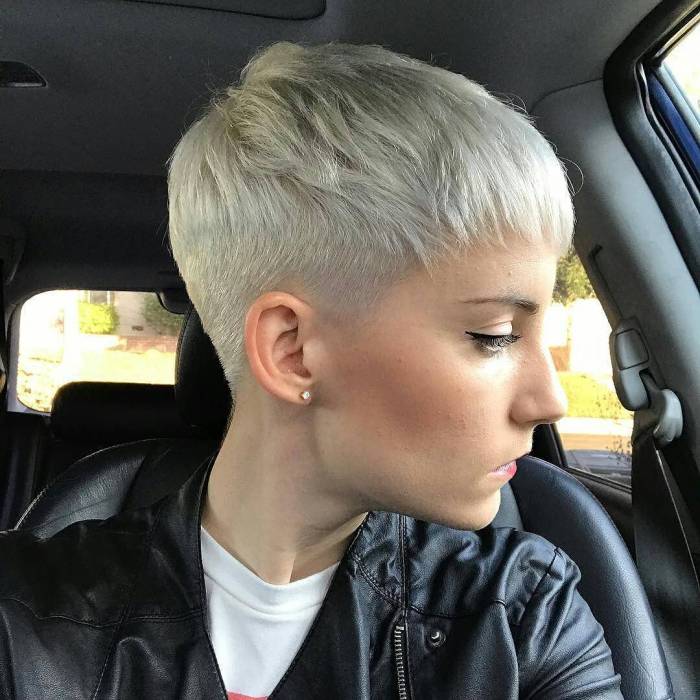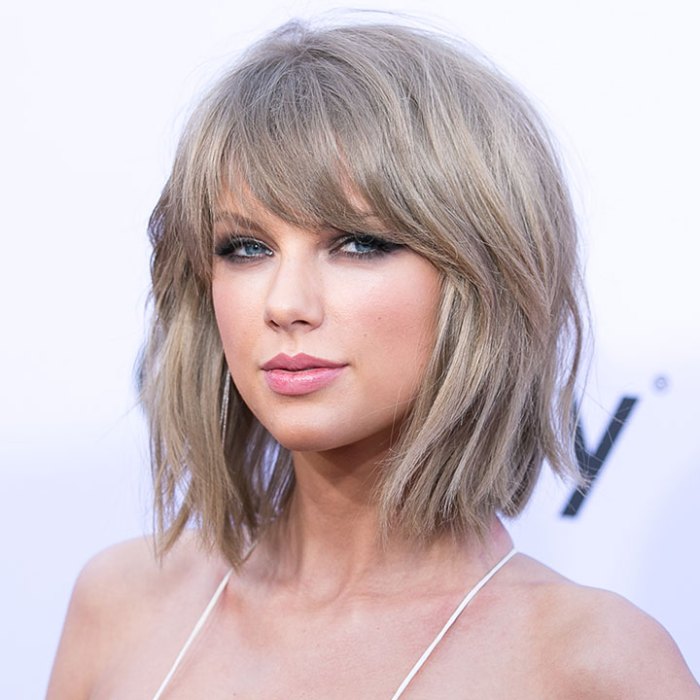Hairstyles for Extremely Thin Hair A Comprehensive Guide
Understanding Extremely Thin Hair
Hairstyles for extremely thin hair – Extremely thin hair, often a source of concern, is characterized by a significantly reduced hair density, leading to a visibly sparse appearance. This can manifest differently in individuals, ranging from overall thinning to noticeable bald patches. Understanding the underlying causes is crucial for effective management and treatment.
Characteristics of Extremely Thin Hair, Hairstyles for extremely thin hair
Extremely thin hair is easily identifiable by its low density. Strands may appear fine and delicate, lacking the body and volume of thicker hair. The scalp may be more visible than usual, and hairstyles may appear flat or limp, regardless of styling efforts. The overall look can be sparse and lacking in fullness.
Common Causes of Extremely Thin Hair
Several factors can contribute to extremely thin hair. These include genetics, hormonal imbalances (such as those associated with pregnancy or menopause), nutritional deficiencies, medical conditions (like thyroid disorders or autoimmune diseases), stress, and certain medications. Age-related hair thinning is also a common factor.
Types of Hair Loss Leading to Extremely Thin Hair
Various types of hair loss can result in extremely thin hair. Androgenetic alopecia (male or female pattern baldness) is a common cause, characterized by gradual hair thinning on the scalp. Telogen effluvium, often triggered by stress or illness, involves a temporary increase in hair shedding. Alopecia areata, an autoimmune condition, leads to patchy hair loss. Understanding the specific type of hair loss is important for targeted treatment.
Hairstyle Choices for Thin Hair
Choosing the right hairstyle is key to creating the illusion of thicker hair. Strategic cuts and styling techniques can significantly improve the overall appearance and volume.
Hairstyles that Add Volume and Fullness
| Hairstyle Name | Description | Best Hair Type | Styling Tips |
|---|---|---|---|
| Pixie Cut | Short, choppy layers create texture and movement, minimizing the appearance of thinness. | Fine, straight to slightly wavy hair | Use volumizing mousse and texturizing spray for added lift and hold. |
| Bob with Layers | A classic bob with strategically placed layers adds volume and dimension. | Fine, straight to wavy hair | Blow-dry with a round brush for added volume at the roots. |
| Long Layers | Long layers create movement and prevent the hair from looking flat and lifeless. | Fine, straight to wavy hair | Use a volumizing shampoo and conditioner, and avoid weighing the hair down with heavy products. |
| A-Line Bob | Shorter layers in the back and longer layers in the front create a flattering shape and added volume. | Fine, straight to wavy hair | Use a curling iron to add subtle waves for added texture and volume. |
Layered Haircuts for the Illusion of Thicker Hair
- Long layers that frame the face create movement and add dimension.
- Short, choppy layers add texture and volume to the crown.
- Graduated layers create a fuller look by adding volume at the ends.
- Face-framing layers can soften the overall look and add volume around the face.
Benefits and Drawbacks of Different Hairstyle Lengths
Short hairstyles are generally easier to style and maintain volume, while medium-length styles offer versatility. Long hairstyles can be more challenging to manage and may appear thinner, but with proper layering and styling, they can still look full.
Styling Techniques for Thin Hair
Various styling techniques can significantly enhance the volume and fullness of thin hair. These techniques involve maximizing the natural texture and using products that add body and lift.
Volume-Maximizing Styling Techniques
Teasing or backcombing at the roots creates lift and volume, while volumizing products like mousses and sprays add body and hold. Using the right tools, such as a round brush during blow-drying, further enhances volume. Avoiding heavy products that weigh the hair down is also essential.
Step-by-Step Guide for a Voluminous Updo
- Prep hair with volumizing mousse and let it air dry or blow-dry with a round brush.
- Tease the crown section for extra volume.
- Gather hair into a loose bun or ponytail, leaving some strands loose for a softer look.
- Secure with bobby pins and hairspray.
- Gently pull out a few strands to frame the face.
Comparison of Volumizing Hair Products
Mousses provide excellent lift and hold, while sprays offer a lighter hold and added shine. Serums, generally used sparingly, add shine and smoothness but should be avoided near the roots to prevent flattening.
Hair Care Routine for Thin Hair: Hairstyles For Extremely Thin Hair
A consistent hair care routine tailored to thin hair is essential for promoting growth and minimizing breakage. This includes choosing the right products and washing techniques.
Daily Hair Care Routine
Wash hair every other day or as needed with a gentle, volumizing shampoo and conditioner. Avoid harsh sulfates and silicones. Apply a leave-in conditioner to add moisture and protect against breakage. Gently detangle hair with a wide-tooth comb, starting from the ends and working upwards.
Best Hair Washing Techniques and Frequency
Washing too frequently can strip the hair of its natural oils, leading to dryness and breakage. Washing every other day or every two days is generally recommended. Use lukewarm water, avoiding hot water, which can damage the hair.
Importance of Gentle Hair Care Products

Source: stylesweekly.com
Harsh chemicals found in many hair products can strip the hair of its natural oils and lead to dryness, breakage, and thinning. Opt for gentle, sulfate-free, and silicone-free products designed for fine or thin hair.
Color and Highlights for Thin Hair
Strategic hair coloring can enhance the illusion of thicker hair. The right color and technique can add depth and dimension, making the hair appear fuller.
Strategic Hair Coloring Techniques
Balayage and highlights, strategically placed, can add depth and dimension, creating the illusion of thicker hair. Avoid all-over dark colors, which can make thin hair appear even thinner.
Impact of Hair Color on Perceived Volume
Lighter colors tend to reflect more light, creating the illusion of more volume. Darker colors can make hair appear flatter. Subtle highlights and lowlights can add depth and dimension, creating a fuller look.
Choosing Hair Colors to Complement Skin Tone

Source: shefinds.com
Choosing a hair color that complements your skin tone is crucial. Warm tones generally suit warmer skin tones, while cool tones suit cooler skin tones. Consulting with a professional hairstylist can help determine the most flattering color choices.
Accessories for Thin Hair
Hair accessories can be valuable tools for adding visual interest and disguising thin hair. They can also create a variety of stylish looks.
Examples of Hair Accessories
- Headbands: Can add a touch of elegance and hide thinning areas at the hairline.
- Scarves: Offer versatile styling options, adding color and texture.
- Clips: Can be used to create updos or to add visual interest to loose hair.
Styling Ideas Using Hair Accessories
| Accessory Type | Hairstyle | Description | Image Description |
|---|---|---|---|
| Wide Headband | Half-updo | A wide headband worn across the forehead adds a touch of elegance and hides thinning areas at the hairline. The hair is loosely pulled back from the face, leaving the rest flowing freely. | A wide, patterned headband worn across the forehead with a loose half-updo, creating a relaxed yet stylish look. The headband subtly conceals any thinning at the hairline, while the loose waves add volume and movement. |
| Silk Scarf | Low Bun | A silk scarf is tied around a low bun, adding a touch of sophistication and covering any thinning at the nape of the neck. | A low, messy bun adorned with a silk scarf tied in a loose knot, adding a touch of bohemian chic. The scarf gracefully conceals any visible scalp at the nape of the neck. |
| Bobby Pins with Embellishments | Braided Updo | Ornate bobby pins are used to secure a braided updo, adding a touch of sparkle and drawing attention away from the hair’s thinness. | A complex braided updo secured with several embellished bobby pins, adding a touch of glamour and drawing the eye to the intricate detail of the braid rather than the hair’s density. |
Tips for Selecting Appropriate Hair Accessories
Consider face shape and hairstyle when choosing hair accessories. For example, wide headbands work well with round faces, while smaller clips suit oval faces. The accessory should complement the overall hairstyle and not overwhelm it.
Maintaining Healthy Thin Hair

Source: futurecdn.net
Maintaining healthy hair involves a holistic approach that encompasses diet, stress management, and addressing potential underlying health conditions.
Role of Diet and Nutrition
A balanced diet rich in protein, iron, zinc, and biotin is essential for healthy hair growth. These nutrients contribute to the strength and overall health of the hair follicles.
Importance of Stress Management
Stress can significantly contribute to hair loss. Practicing stress-reducing techniques such as yoga, meditation, or spending time in nature can help promote hair health.
Potential Health Conditions Contributing to Thin Hair
Various health conditions, including thyroid disorders, autoimmune diseases, and anemia, can contribute to extremely thin hair. If experiencing significant hair loss, it is crucial to consult a doctor to rule out any underlying medical issues.
FAQ Summary
Can I use heat styling tools on extremely thin hair?
Use heat styling tools sparingly, as excessive heat can damage thin hair and lead to breakage. Always apply a heat protectant spray before using any heat styling tools.
How often should I wash my extremely thin hair?
Washing too frequently can strip natural oils, leading to dryness and breakage. Aim for every other day or every two days, depending on your hair type and scalp.
Are there any vitamins or supplements that can help with thin hair?
Biotin, Vitamin D, and iron are often associated with hair health. Consult a doctor or nutritionist to determine if supplementation is right for you.
What are some natural remedies for thin hair?
Essential oils like rosemary and lavender can stimulate hair growth. A healthy diet and stress management are also crucial.












